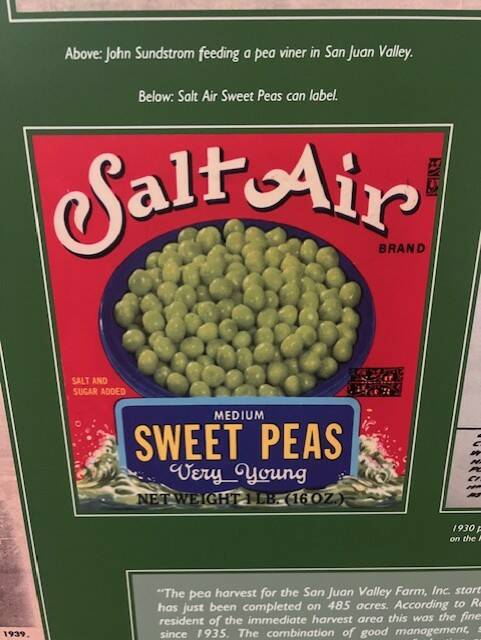By Julie McIntire Corey
Author and Journal contributor
The San Juan Historical Museum new farming exhibit provides an exceptional testament to the hard-working early island residents and an amazing timeline of island life past and present.
Mr. and Mrs. Gino Fortunato visiting the island from San Francisco, California, toured the museum and shared some thoughts: “My wife and I are history buffs; she plans all of our trips, and she is really good at it. We dropped our son off at college in Seattle and headed to San Juan Island for a visit. This place is amazing! Being able to look up at all the old machinery was terrific. When asked, what was your favorite part of the museum?” Gino replied, “The jail and, looking at an old-time horse buggy up close, who knew it had so much suspension. We also enjoyed learning about Spring Street and seeing the exhibits.”
The Museum of History and Industry was recently opened and is housed in a relocated 1800s-style barn. The MHI exhibits are educational and entertaining, focusing on the island’s past industries: farming, fishing, logging, and limestone processing. All the stories, photographs, and artifacts are one-of-a-kind donated by local families and businesses. They show the creative, ingenious, and sometimes visionary lives locals lived.
Island farming began five thousand years ago when the island’s first farmers, the Coast Salish People, cultivated and harvested Camas’s bulbs for food. The bulbs were nutrient-rich and grew well on the island. (Camas are still growing wild along many island roads.) These Indigenous Women farmers also raised a special dog called “Wooly Dogs” for their hair. It was long and, combined with other materials, was used to weave baskets.
In the later 1800s, the King Family had 445 acres. They harvested grain, raised sheep, and had an orchard of 300 pear and apple trees. Only one pear tree has survived; it still grows and produces Clairgeau Pears each fall.
In 1922, green peas were introduced to San Juan Valley. Farmer John M. “Pea” Henry established a cannery in Friday Harbor with the brand name Salt Air Peas.” At one time, 20 giant machines were located throughout the valley processing peas. The first tractors arrived on the islands. in 1924 making it a banner year for island farmers. Then, in 1940, disaster struck in the form of an evasive leaf beetle called a “pea weevil.” Within a few years, the crop was abandoned. Then, in 1956, pea farming started again on the island. It was reported that 450 acres were planned in peas. That pea farm business lasted until 1966.
The full farming stories and exhibits are located at the MHI on The San Juan Historical Museum grounds, at 323 and 405 Price Street, Friday Harbor, Washington.
Open Monday through Thursday from 11 to 2.
The San Juan Historical Society Museum is a 501( c )(3) nonprofit organization dependent on its wonderful volunteers and staff. The Museum would like to thank the islanders who made the Farming exhibit possible:
Funding Contributions: Honeywell Charitable Fund of the Community Foundation of the Rappahannock River Region (Virginia) San Juan County Lodging Tax Grants.
The Farming Exhibit content design and fabrication: Jenn Rigg, Boyd Pratt, Peter Chan, Seth Dunlap & Bobby Ross Construction.



